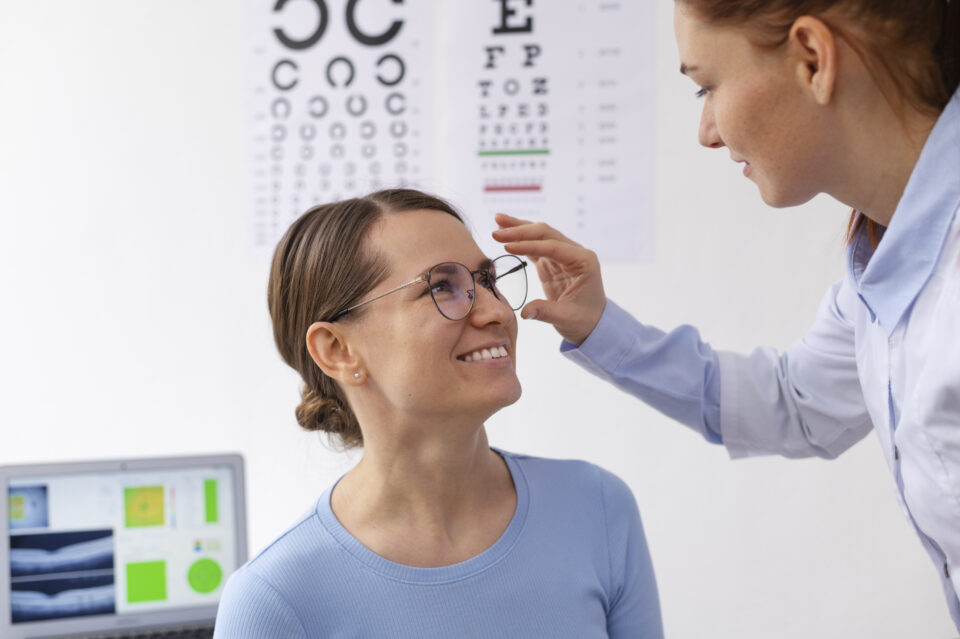Understanding your eye test prescription is a key step before choosing the right glasses. So many details factor into the purchase: frame material, shape, color, not to mention lens type and even thickness. These decisions can seem overwhelming. But once you understand the secret language of your eyeglasses prescription, you’re already halfway there. We’ll dissect each cryptic section to help you make an informed choice.
So pull your favorite chair closer, get yourself a cozy cup of tea, as we embark on this enlightening journey of transforming those puzzling prescription numbers into stylish, functional eyewear.
Table of Contents
Seeing the Numbers Right: Your Lens
Let’s delve deeper into the prescriptive numbers on your card because understanding these is like possessing the secret decoder ring to the world of spectacles.
Those minus or plus signs in front of your SPH actually explain the refractive error of your eye. Think of it as being shortsighted (minus) or longsighted (plus). The higher the number, the greater the correction your eyes need. So, a -1.00 would imply you have mild nearsightedness, while +3.00 indicates moderate farsightedness.
Similarly, if there’s a CYL number present on your prescription, fear not. It merely means you have astigmatism – a condition where your eye isn’t perfectly round. And guess what? It’s perfectly natural. Almost everyone has it to some degree.
Taking the Right Frame: A Material Choice
Now that we’ve deciphered the language of your prescription let’s ponder the next important decision: the material of your frames. Metal or plastic? Comfort or durability? Let’s dissect the pros and cons to understand this better.
Metal frames are lightweight, adjustable, and have this lovely, sleek elegance about them. But they may not be as durable or hypoallergenic as their plastic counterparts. On the other hand, plastic frames are sturdy and come in an enticing palette of colors to match your personalized style. But, they might not be as comfortable or flexible as metal frames. So, this choice heavily depends on your comfort, tolerance, and personal style.
The Perfect Fit: A Matter of Face Shape
When choosing the right glasses, the shape of your face plays an important role in finding the fitting pair.
Oval faces tend to have balanced proportions, which is why they are suited to most frame shapes. Round faces, on the other hand, are best suited for angular, square frames as they provide a striking contrast to the round elements of the face. For heart-shaped faces, frames that are wider at the bottom provide balance, while those with square faces need frames that soften their angular lines.
Your Lifestyle: What Lens Type Suits You Best?
Your lifestyle plays a major role in selecting the right eyeglasses. Do you engage in outdoor activities? Work long hours on a computer? The answers dictate the lens type you should be considering.
For outdoorsy people, photochromic lenses, which darken in sunlight, can be a lifesaver. Computer users, on the other hand, would benefit significantly from blue light blocking lenses, which help minimize digital eye test strain.
Conclusion
To wrap things up, decoding your eye test results and selecting the right glasses is a process that requires understanding and patience. It’s a matter of aligning your vision correction needs with the material, frame shape, and lens type that best fits your personal style and lifestyle preferences.
Remember, there’s no such thing as one-size-fits-all in the world of eyewear. Your eyeglasses are as unique as you are, and they should enhance not only your vision but also your aesthetic charm. So take a deep breath, revisit your prescription, and walk into that optical shop with newfound confidence and knowledge. Here’s to seeing the world through clearer, more fashionable glasses!

